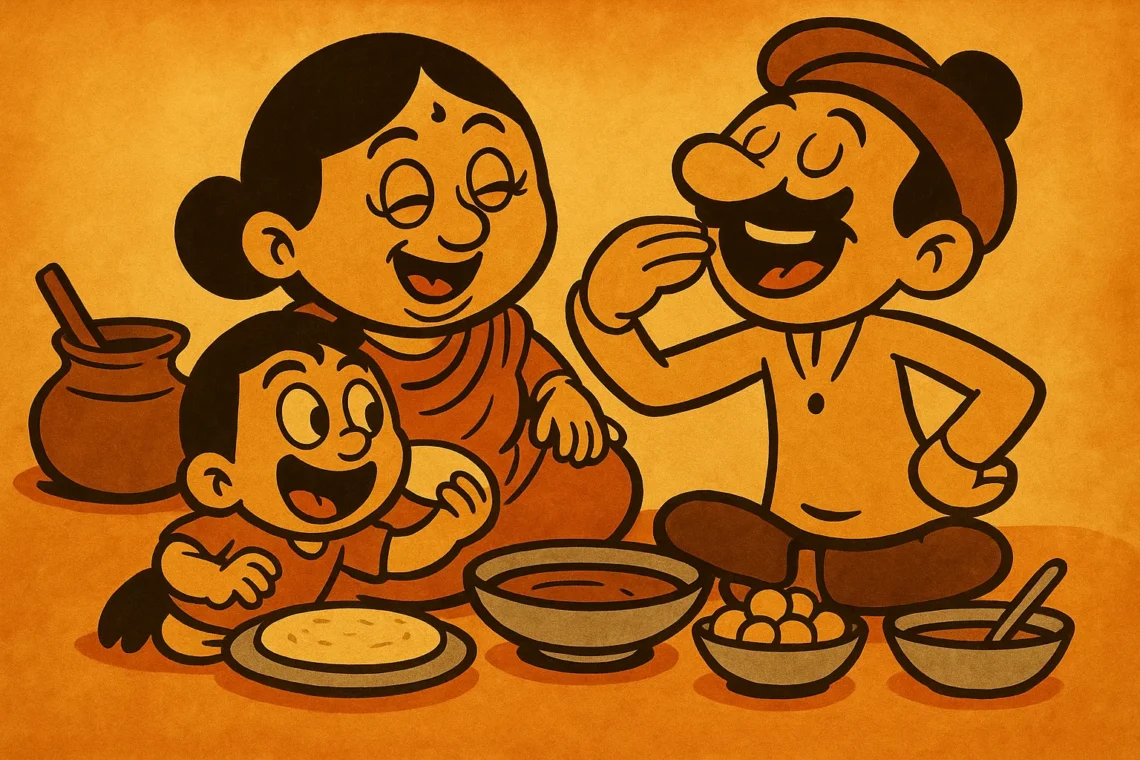If I ask you to think of sourness in Indian cooking, chances are, your mind will skip straight to tamarind or lemon. Those are the heavyweights, the crowd-pleasers, the ones that loudly demand attention. But there’s a quieter, subtler player that deserves its own spotlight—amchur, or dried mango powder. It’s not the type to take center stage, but oh, does it leave an impression.
For me, amchur is a time machine. It doesn’t just awaken my taste buds—it takes me straight to my childhood. The dusty afternoon sun streaming into the kitchen, the smell of something simmering in the kadhai, and the unmistakable tang of dried mango powder wafting in the air. I can almost hear my mother’s voice: “Add a pinch of amchur to that.” And just like that, the dish was transformed—zesty, bright, with a little kick of sourness that wasn’t too aggressive. Subtle, like a well-placed note in a song you didn’t know you were listening to.
The Power of the Tang
At first glance, amchur might seem like the underdog in the spice cabinet. Compared to the bold, robust flavors of garam masala or the comforting warmth of cumin, amchur’s faint aroma and pale color might not seem as attention-grabbing. But this spice is a secret weapon in Indian kitchens, often used to add depth and complexity where mere sourness would fall flat.
Amchur is made by drying green mangoes and grinding them into a powder. This simple process preserves the sour, tangy essence of the unripe mango, without the moisture, and intensifies its unique flavor. It’s the type of sourness that doesn’t hit you in the face. Instead, it lingers—a gentle reminder that something is missing, and once added, everything feels just right. It’s the kind of sourness that complements savory dishes, soups, snacks, and even chutneys, and is often used in both cooking and as a finishing touch.
The Taste of Memory
For me, amchur is tied to food memories from childhood. It wasn’t just in curries and dals. It was in everything—my mother’s aloo masala, sprinkled lightly over crispy kachaudi, or hidden in the pockets of chaat sauces. It was there to enhance, never overpower. Like an old friend you don’t see every day, but when you do, everything just clicks. You can’t imagine the dish without it.
There’s a reason that amchur was, and still is, such a kitchen staple. In the hot Indian summers, when fresh mangoes were ripe for the picking, amchur was a way to preserve their flavor for the rest of the year. We didn’t just eat mangoes in their fruit form; we stretched their season by drying and grinding them into powder. What was once seasonal became eternal. This is what makes amchur feel like such an intimate part of the Indian kitchen. It’s a taste of summers past, captured in a tiny spoonful.
Amchur’s Versatility
Amchur is an incredibly versatile spice. Unlike tamarind or lemon, which can overpower a dish with their acidity, amchur quietly enhances flavors without ever stealing the spotlight. A pinch of it in a vegetable curry, a dash in raita, or mixed into the seasoning for pani puri—it adds a layer of complexity that you didn’t know you needed. You can even stir it into fruit salads to balance out sweetness, or sprinkle it over roasted peanuts for a quick snack. Its ability to complement a variety of flavors without taking over the dish makes it a silent partner in most Indian cooking.
Unveiling the Mystique of Amchur
But beyond its culinary abilities, amchur holds a deeper significance. It’s a spice that’s somehow tied to memory and comfort. Every time I smell it, I am transported back to those summer afternoons when the streets were lined with mango vendors, their carts brimming with green, unripe mangoes, ready to be sliced and dried. I’m reminded of that simple joy—of food not just filling our stomachs, but connecting us to moments, seasons, and generations. It’s as much about nostalgia as it is about flavor.
In many ways, amchur is the unsung hero of Indian cuisine. It doesn’t demand attention, but it ensures that the dish is never incomplete. It’s the kind of ingredient that’s so perfectly integrated into everyday life that we rarely pause to appreciate it. And maybe that’s the beauty of amchur—it’s there when you need it, quietly enriching your food, enhancing your senses, and reminding you of a time when the food was more than just a meal, but a memory.
Modern Amchur
Amchur’s role in the kitchen has evolved, but its significance remains the same. In a world where we’re increasingly drawn to the bold, the exotic, and the new, amchur remains steadfast, reminding us of the simple wisdom in our kitchens. In my own kitchen in Austin, I find myself reaching for it in the strangest moments—not just when cooking Indian food, but when making salad dressings, seasoning roasted vegetables, and even sprinkling it over a quick bowl of soup. It’s a culinary reminder that some flavors are timeless, that the past can linger in the present, and that sometimes, all it takes is a pinch of amchur to bring everything together.
Born in Mumbai, now stir-frying feelings in Texas. Writes about food, memory, and the messy magic in between — mostly to stay hungry, sometimes just to stay sane.












